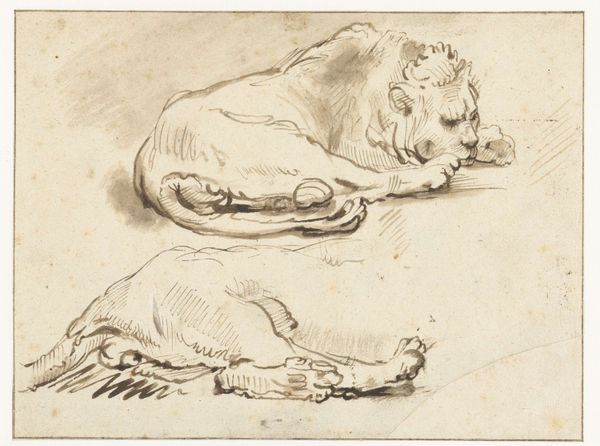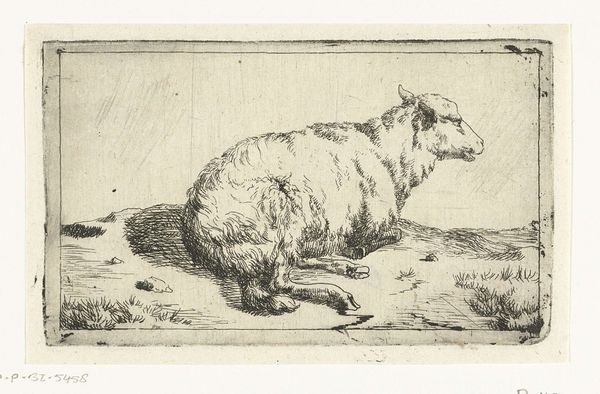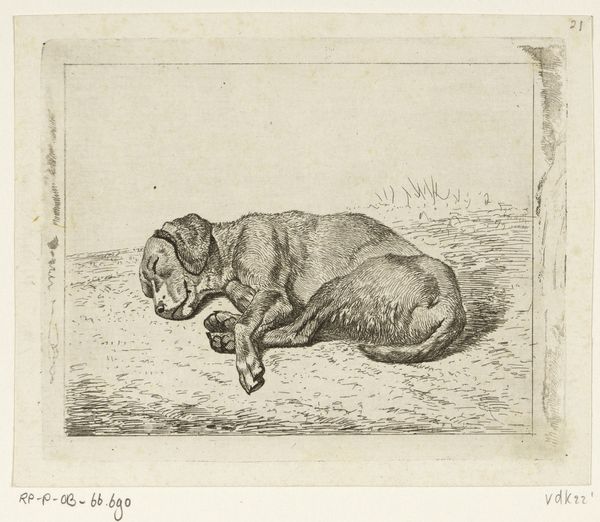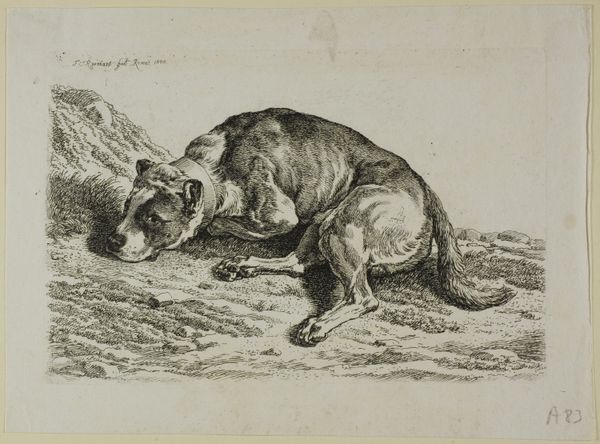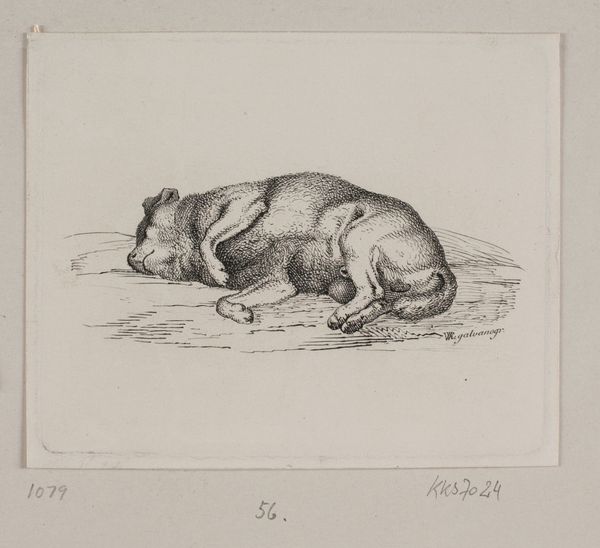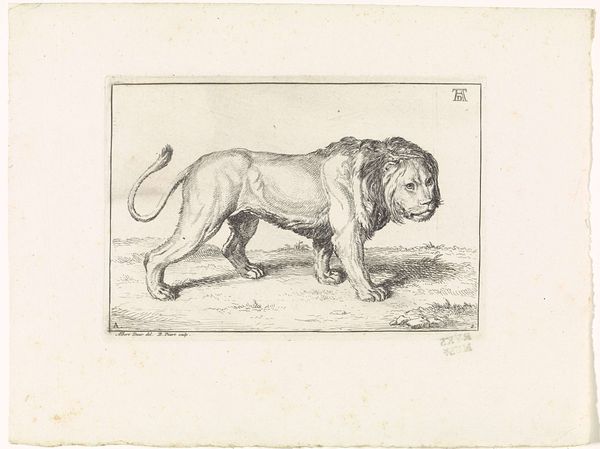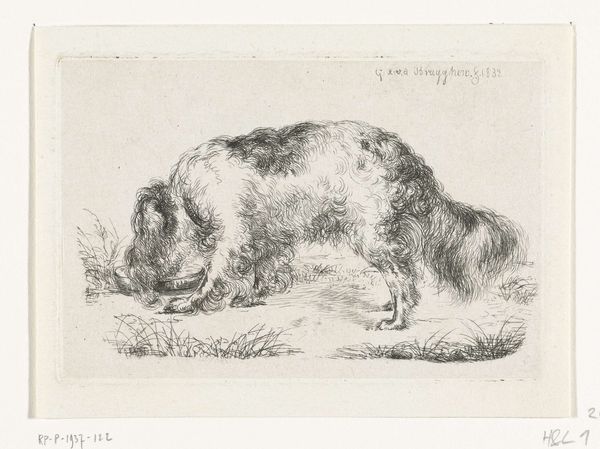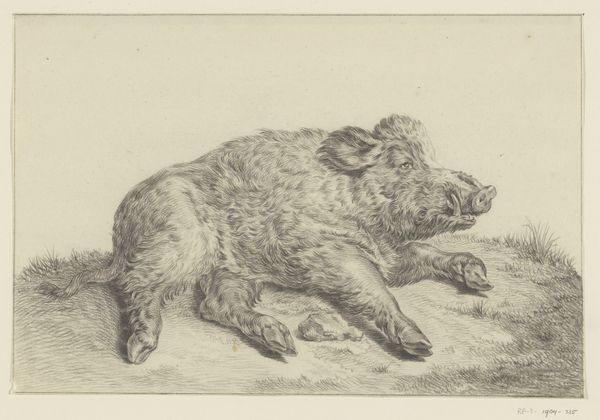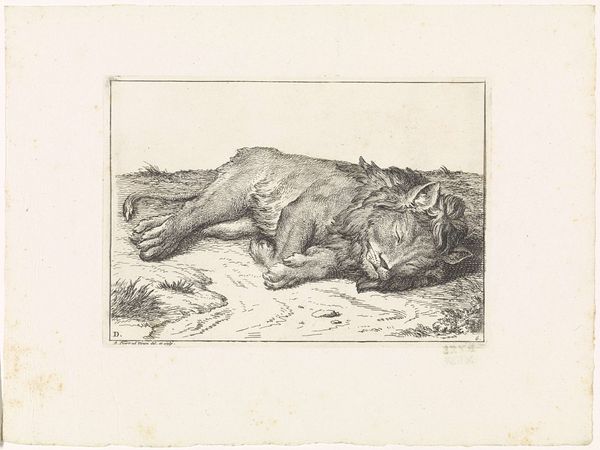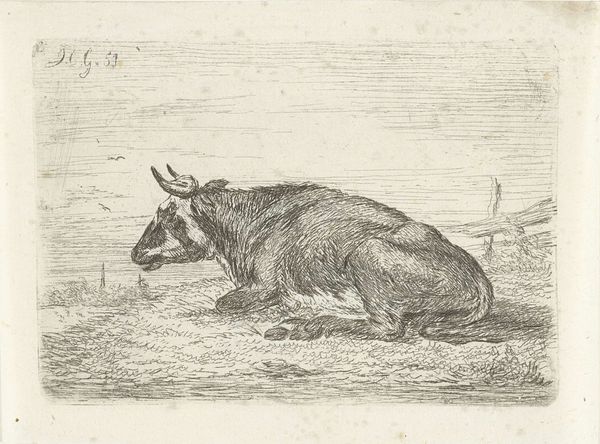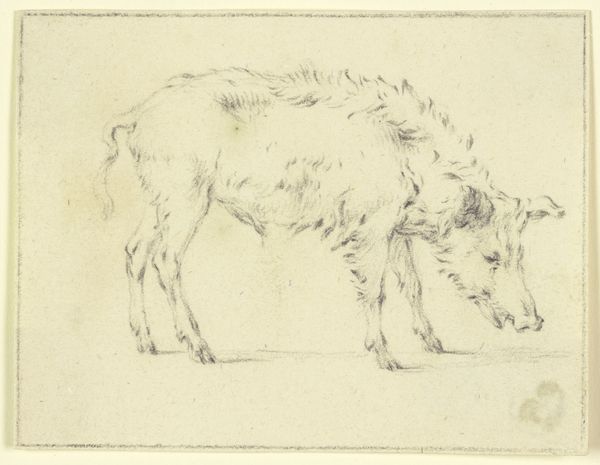
drawing, paper, ink
#
portrait
#
drawing
#
animal
#
pen sketch
#
paper
#
ink
#
realism
Dimensions: height 50 mm, width 87 mm
Copyright: Rijks Museum: Open Domain
Anthonie Willem Hendrik Nolthenius de Man created this etching of a reclining dog in 1828. Animal portraiture offers an important insight into the cultural values of the Biedermeier era in the Netherlands, a period known for its emphasis on domesticity and retreat from public life following the Napoleonic Wars. Looking at the print, we see a relaxed domestic animal. The image offers an intimate glimpse into the tranquil everyday life of the Dutch middle class during this period. The dog’s relaxed posture and the delicate lines of the etching evoke a sense of quiet contentment, reflecting the Biedermeier ideal of domestic bliss and personal comfort. The work is inscribed with what appears to be the dog's name, Frisk. This emphasizes the growing importance of pets as family members, a trend that mirrored broader shifts in social attitudes towards animals and nature. Historical records, such as journals and estate inventories, help us to confirm the growing importance of companion animals in middle-class homes.
Comments
No comments
Be the first to comment and join the conversation on the ultimate creative platform.
